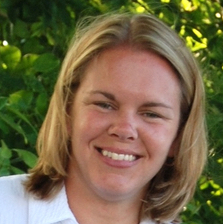
In honor of World Day Against Child Labor (June 12), Save the Children and partners Breakthrough, Pratham and the IKEA Foundation announced the €7 million second phase of their program to combat child labor and promote education in cotton communities in India. There are an estimated 12.6 million child laborers in India between the ages of 5-14, many who are involved in the cotton industry, working under deplorable conditions sometimes more than 12 hours a day. This program is working to bring children back to their communities and families, put them in school and allow them to be children.
The first phase of this long-term program, started in 2009, impacted more than 1,800 villages and 600,000 children in the states of Maharashtra and Gujarat. The second phase aims to reach more than 790,000 children in Punjab, Haryana and Rajasthan. Thomas Chandy, CEO of Save the Children, said, "We will work closely with panchayat (village) leaders, farmers, teachers, families and Indian state officials, to provide children with access to quality education, improve teacher training and develop local child protection committees and school management committees." New to phase II, the program will also address gender-based discrimination.
Working from a successful foundation
“The IKEA Foundation is committed for the long-term to impacting child labor. We are focusing on making sure phase II is successful and builds on the positive impacts from phase I,” said Jonathan Spampinato, Head of Communications and Strategic Planning.
Accomplishments from phase I include:
- Creation of community groups to protect children. Comprised of parents and community members, these groups give a voice to members to guard the welfare of children in the community.
- Enrollment increase in schools. Among six-to-ten-year-olds, enrollment rate in villages that participated in the program was 92 percent, five percent higher than villages outside the program. Among eleven-to-fourteen-year-olds, participating enrollment rate is 89 percent, four percent higher.
- Communities monitoring schools and teachers. Newly created groups give parents a say in running the schools and aim to bring working children back to school.
- Abolishing inter-state migration. Phase I initiatives along with government interventions contributed to reducing children's migration between states to work in cotton. A baseline survey estimated 10,000 children migrated to work as laborers, while an impact assessment after phase I indicated almost a complete cessation of child migration in and out of program districts.
- Training of anganwadi workers and teachers. Nearly 2,000 Anganwadi (childcare centers for children under six) workers were taught methods to make classroom learning more compelling.
- Development of training materials. Phase I developed training materials that have been used by the Gurarat and Maharashtra governments and UNICEF.
In these regions, there is also the deep-seated issue of gender discrimination that starts before birth, severely limiting girls' opportunities for education and growth. Indeed, recently India has been in the spotlight due to attacks on women. In both Punjab and Haryana, girls outnumber the boys among child laborers (sometimes even double the number) and the sex ratios are the lowest in the country at 834 and 846 per 1000 male children (2011 census). In addition, Sex Selective Elimination (SSE), the practice of aborting girls in favor of having more boy babies, has lead to the decline of the number of girls in recent decades.
Phase II aims to combat gender-based discrimination in the schools, developing elementary school materials designed to address attitudes about girls and their place in society. Newly established youth clubs will also champion girls' rights and encourage girls to pursue educational opportunities.
The final program effort will be to interact with entire communities using mobile street theaters along with art, games and social media activities. Breakthrough's multimedia van will travel to participating communities to raise awareness about children's rights and gender discrimination through the use of educational videos and interactive activities like plays and other performances.
“We know there is no quick-fix solution to ending child labour, but long–term approaches can yield impressive results,’’ Per Heggenes, CEO of IKEA Foundation explained in a press release. “The IKEA Foundation, with our partners, has been tackling this issue in India for nearly a decade. This new phase reinforces our long-term commitment and our desire to help millions more children out of child labour and back into the classrooms.”

Andrea Newell has more than ten years of experience designing, developing and writing ERP e-learning materials for large corporations in several industries. She was a consultant for PricewaterhouseCoopers and a contract consultant for companies like IBM, BP, Marathon Oil, Pfizer, and Steelcase, among others. She is a writer and former editor at TriplePundit and a social media blog fellow at The Story of Stuff Project. She has contributed to In Good Company (Vault's CSR blog), Evolved Employer, The Glass Hammer, EcoLocalizer and CSRwire. She is a volunteer at the West Michigan Environmental Action Council and lives in Grand Rapids, Michigan. You can reach her at andrea.g.newell@gmail.com and @anewell3p on Twitter.














